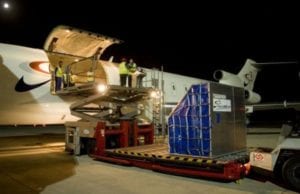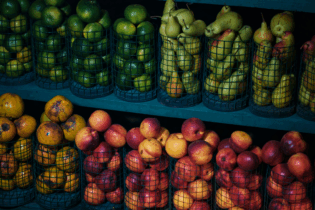The month of March 2016 offered some hope of a change for the better in a few of the world’s air cargo markets.
Although year-on-year (YoY) volumes dropped by 0.9% worldwide, the flows from Asia Pacific to Europe and the Middle East & South Asia (MESA) showed growth of 19% and 12% respectively. Volumes from MESA to Europe were up by 9%. Europe and MESA were the regions performing best in incoming traffic growth (+8% and +3%). YoY yields (in USD) dropped by 18%; least affected were Central & South America (-2%) and Africa (-5%). Yields held up better when compared to February 2016. Worldwide they fell by 1.9%, with Africa and Asia Pacific doing slightly better than average, although the month-over-month yield change in these two origins was negative as well. With the effects of Chinese New Year (CNY) now fully accounted for, this is the moment to compare the year so far with the first quarter of 2015. Worldwide volumes dropped by 1.3%, and yield in USD by 17%. However, for reasons well documented in the past, the comparison suffers a lot from the uncommon circumstances across the Pacific in Q1 of 2015.So, when excluding the flows between Asia Pacific and North America, the worldwide picture for Q1 is quite different: worldwide volumes increased by 1.4% YoY, whilst the yield drop was limited to 13.6%. Just looking at outbound flows from Asia Pacific, we see the following: volumes down by 3.9% with yield in USD decreasing by 23.8%. Taking out the flow to North America, however, these figures change considerably, to a volume increase of 1.5% and a yield drop of 16.6%.
Despite the much-reported slump in business from China, the country once again confirmed its status of being air cargo’s main growth engine. YoY volume in Q1 was up by 6% in total, and by remarkable 18% in the markets from China to Western Europe. However, this growth came at the price of a heavy drop in yields: Q1 revenues (in USD) between China and Western Europe dropped by 12% YoY, due to a yield decrease of over 25%. The Chinese origins growing most were Shenzhen, Guangzhou, Zhengzhou and Chengdu. The two product categories that have propped up the air cargo performance for quite a while, i.e. perishables and pharmaceuticals, continued to do so in Q1. Perishable volumes increased by over 6% and pharmaceuticals by just under 10%. Given the fact that the latter has a yield more than 60% over the general cargo yield, coupled with a much smaller yield decline YoY, it is understandable that carriers want to grab a part of this market. The highest yielding cargo category, live animals, which covers less than 1% of total cargo volumes, saw a decline of 5% in volumes coupled with a yield increase of 2%.







